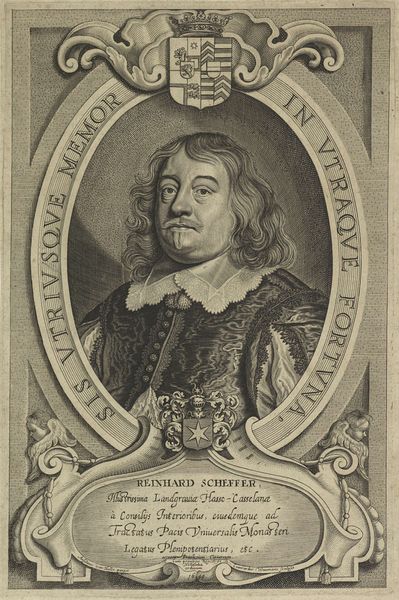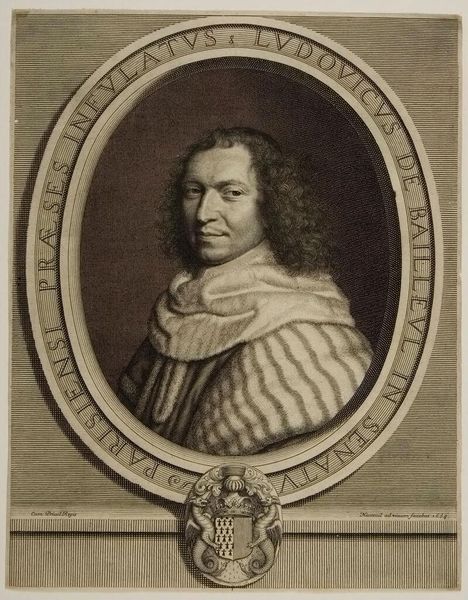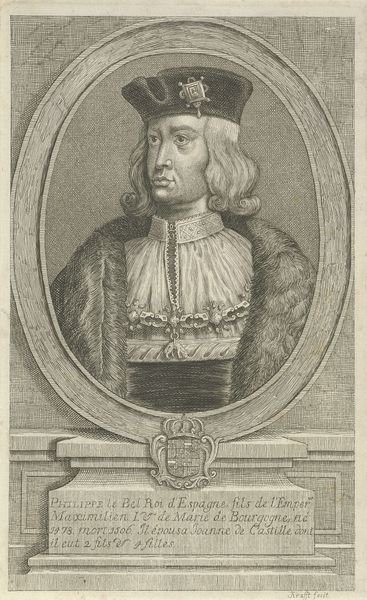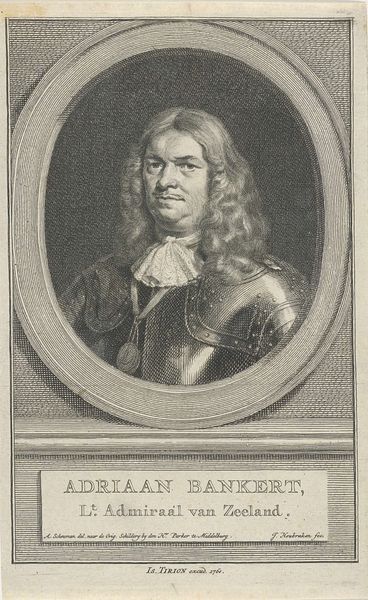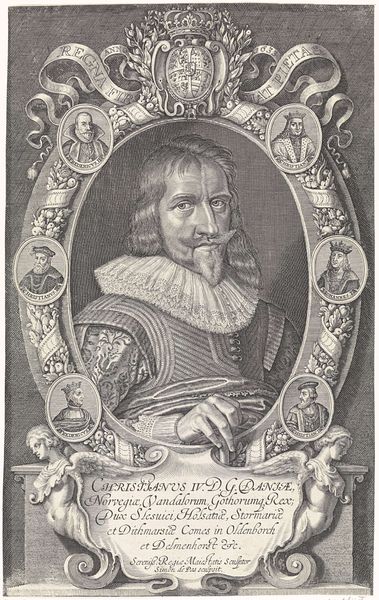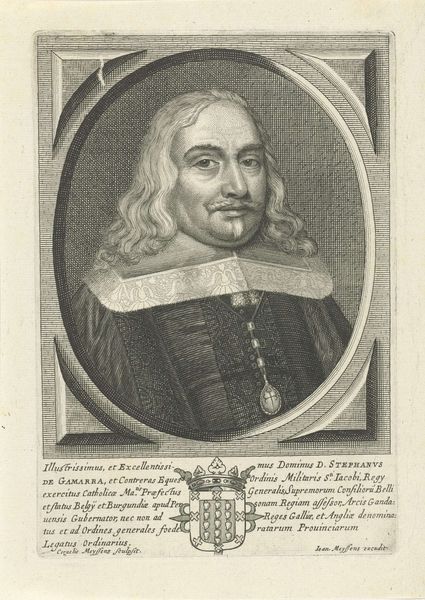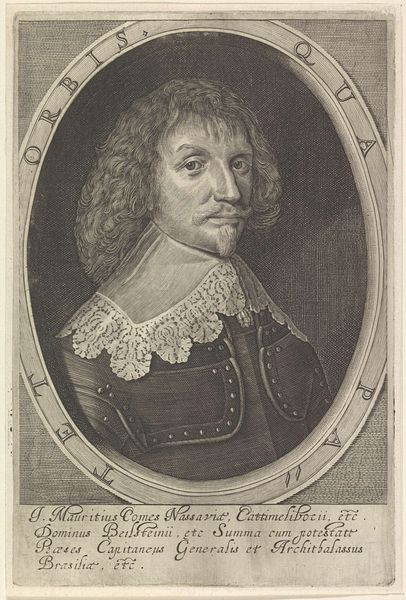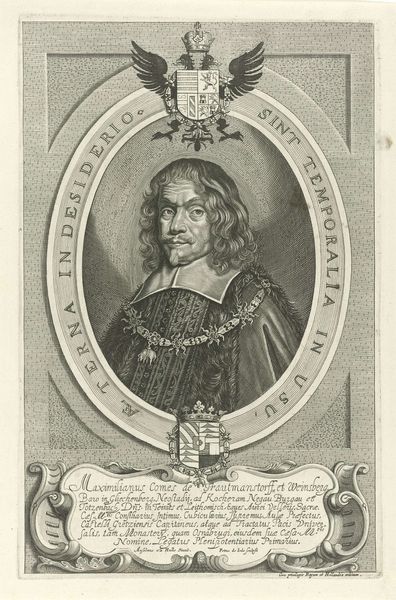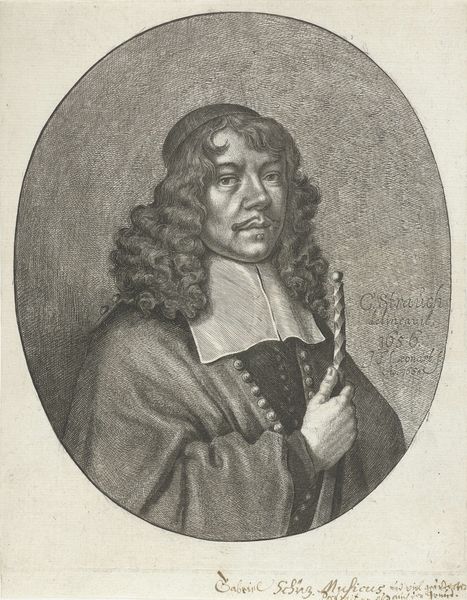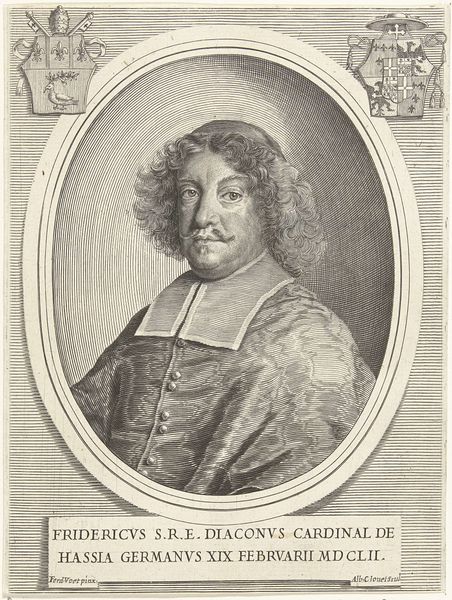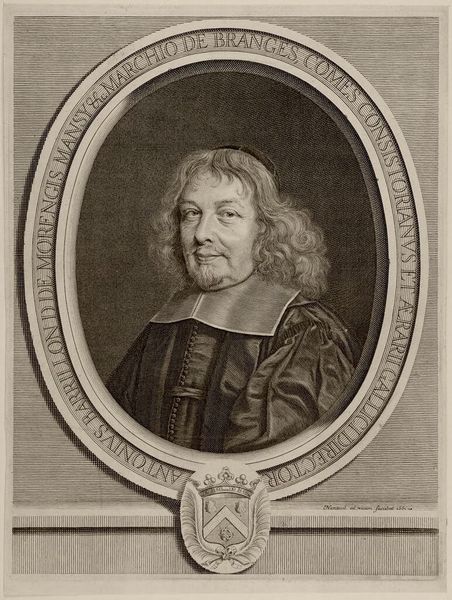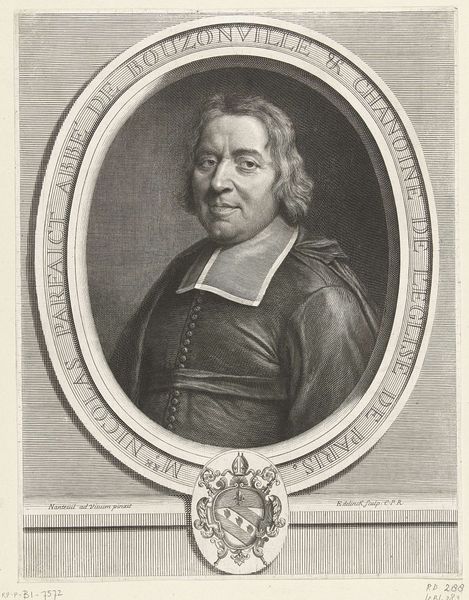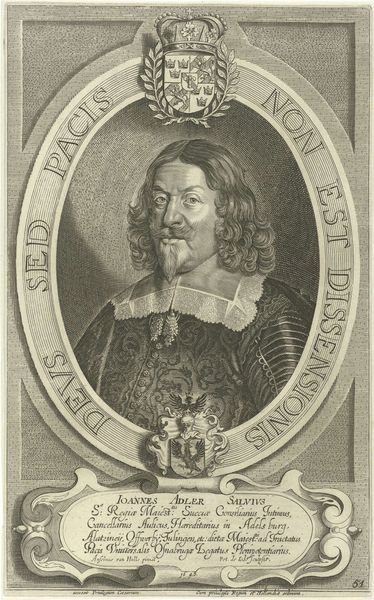
engraving
#
portrait
#
baroque
#
old engraving style
#
portrait drawing
#
history-painting
#
engraving
Dimensions: height 340 mm, width 250 mm
Copyright: Rijks Museum: Open Domain
Curator: Let's delve into this striking engraving, circa 1670-1694, entitled "Portret van Johann Adolph Kielmann von Kielmannsegg" by Richard Collin. Editor: My immediate impression is one of controlled grandeur. The oval frame, filled with detail, really anchors the subject with authority. Curator: Indeed. Kielmann von Kielmannsegg, here immortalized, served in a prominent role. Analyzing this through an intersectional lens, we have to consider the visual construction of power and privilege, manifested through dress and heraldry. The man exudes upper class authority, which would have considerable bearing upon the people under his power, in his contemporary context. Editor: Absolutely, and note the technique—the dense, interwoven lines of the engraving create a palpable sense of texture. See how Collin varies the density of lines to model the face and hair? It’s a masterclass in tonal variation using a purely linear medium. The composition guides the eye. The bright sheen on his curls contrasts with the shadowed background behind the portrait. Curator: Precisely, and this kind of Baroque portraiture served specific social functions. These representations affirmed familial lineages, elevated positions of powerful and political actors and visually asserted power structures. We cannot remove an artwork from it's sociopolitical context. What messages was the patron hoping to broadcast with an authoritative image of themselves? Editor: And consider how the symmetrical arrangement and decorative elements reinforce a sense of order and hierarchy. Every visual element reinforces a message. There's even a latin inscription, though difficult to read, which acts as further embellishment. Curator: Right, considering the language, who would have had access to such an item? This reinforces elitist societal structures. By situating ourselves within this historical paradigm, it prompts reflection upon contemporary issues and power structures. Editor: Yes, it really is a compelling case study in visual communication. The level of attention is fascinating in such a traditional medium. Curator: By considering the context of identity, race and politics inherent within the frame we get a powerful lens through which we are better able to unpack our society today. Editor: Indeed, both its technical execution and visual encoding speak volumes.
Comments
No comments
Be the first to comment and join the conversation on the ultimate creative platform.

